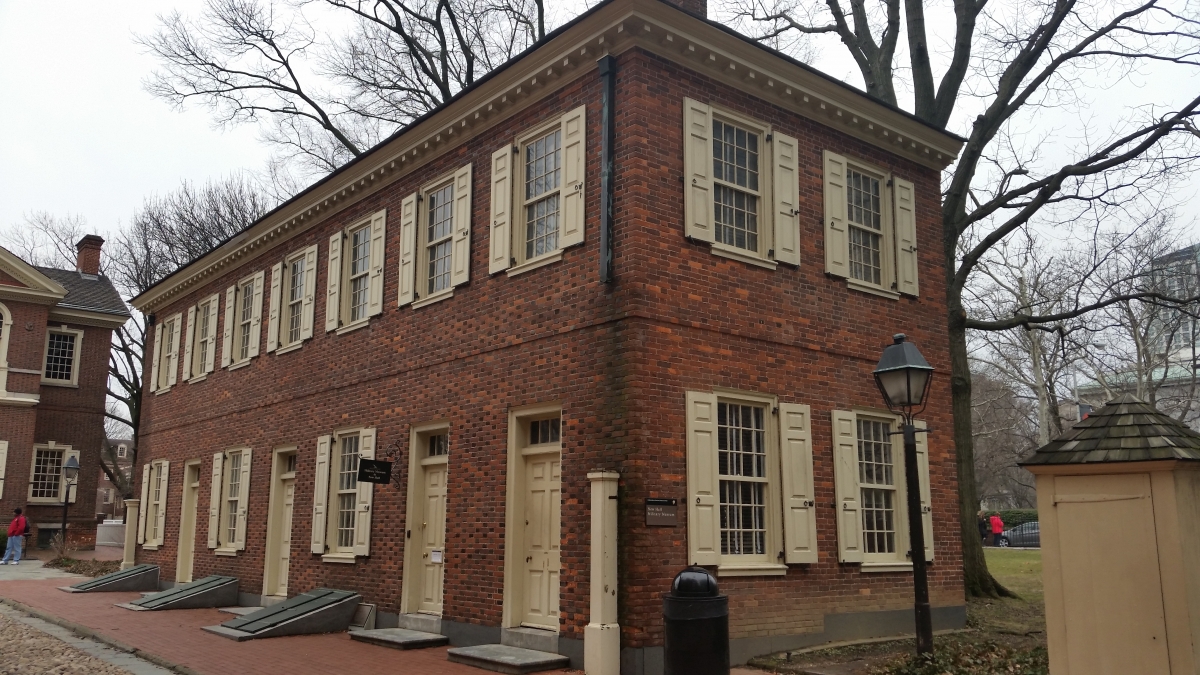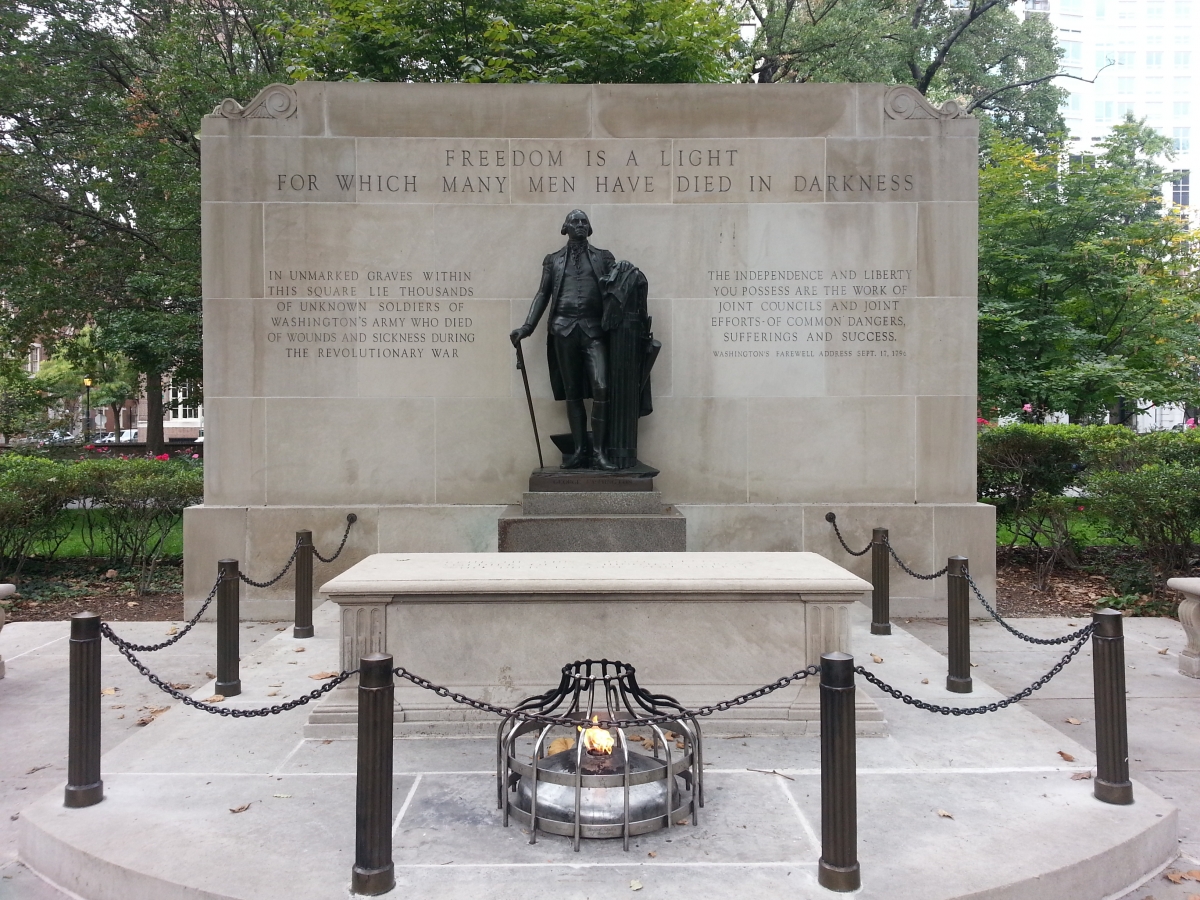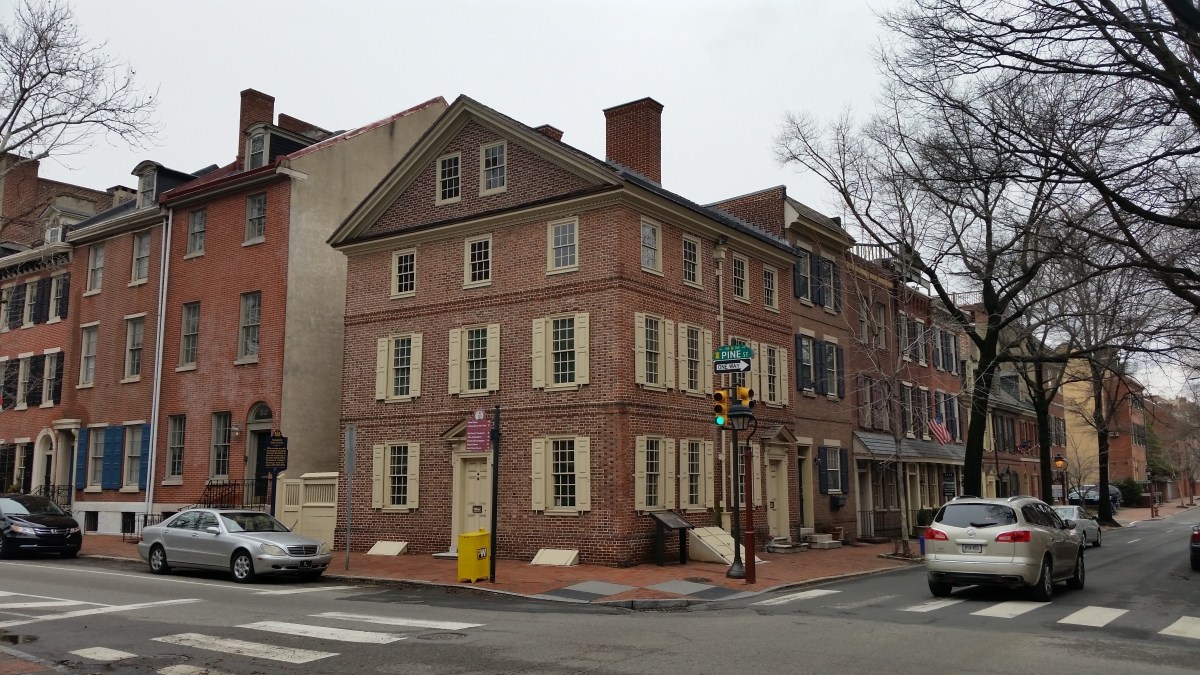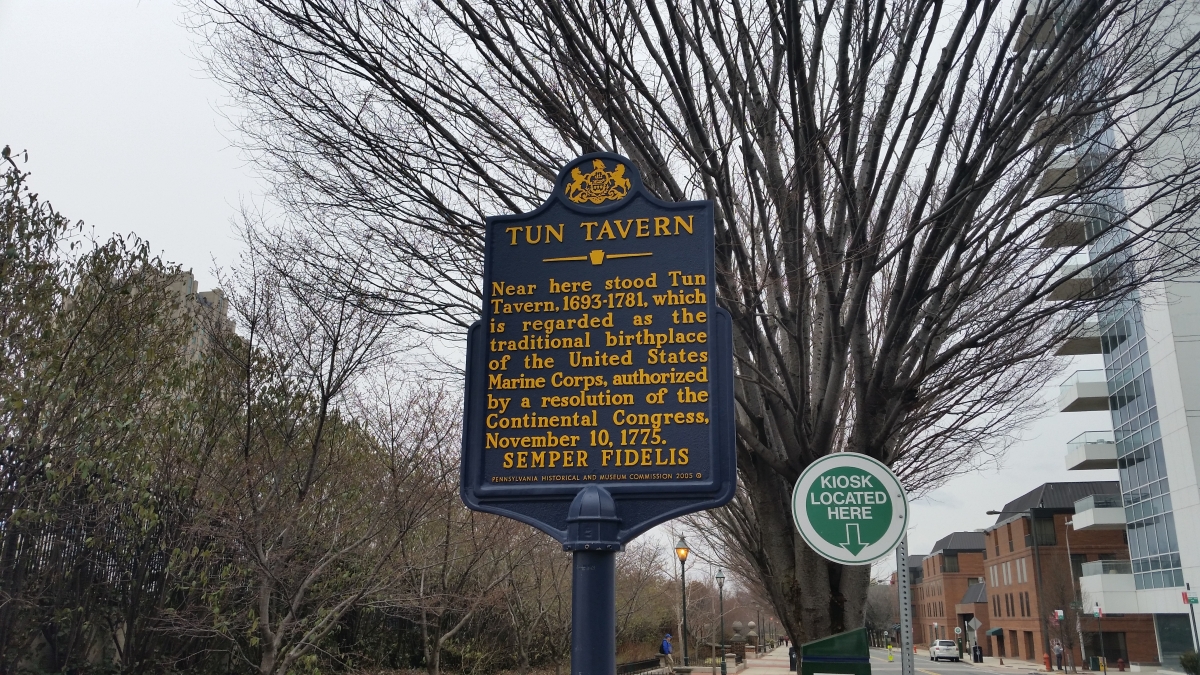A tour of the American Military’s birthplace.
The Constitutional Walking Tour’s Military Tour
Here at The Constitutional Walking Tour we’re well known for our custom tours which can be designed to fit the exact needs of our guests.
Custom tours are available to VIP customers who hire a private guide as well as to all groups, such as
corporate and
school groups. One custom tour that we’ve given to multiple groups throughout the years is a Military History Tour. As the birthplace of the United States
Army,
Navy, and
Marine Corps, Philadelphia holds an extremely important place in the history of America’s armed forces. On our Military History Tour we’ll visit some sites that we visit on every tour such as
Independence Hall and
New Hall Military Museum, but we’ll also visit entirely unique sites. Here are just a few of the extra sites you’ll see on our Military History Tour!
Tomb of the Unknown Soldier
6th and Walnut Streets,
Philadelphia, PA 19106
877.444.6777
Not many realize that Philadelphia was not just a political center during the Revolutionary War but also an active battlefield during parts of the war. Following the British victory against George Washington and the Continental Army in the Battle of Brandywine, the British took over the city of Philadelphia. The Americans made an attempt to win Philadelphia back in the Battle of Germantown, which took place right on present-day Philadelphian soil, but the battle resulted in another crushing loss for George Washington and the Continental Army. The British would end up occupying Philadelphia for nearly a year.
During the British Occupation of Philadelphia, many American prisoners of war were held in the city at the Walnut Street Jail. Conditions were deplorable and dozens of prisoners died each day from exposure to the cold, starvation and disease. Most of these American Soldiers would then be buried in Southeast Square which was then a potter’s field. British Soldiers, victims of yellow fever epidemics and paupers were also buried within the square. Today Southeast Square is known as Washington Square and strolling through the beautifully landscaped park you’d scarcely know that upwards of 2,000 American Revolutionary Soldiers and thousands of others, are buried beneath your feet. There is however a reminder within the park that it is the final resting place for thousands of men who gave their lives for American freedom. Directly in the center of the park is the Tomb of the Unknown Soldier, a memorial dedicated to the thousands of unknown soldiers buried in mass graves within the park.
The tomb features a statue of George Washington, general of the Continental Army and commander of most of the troops buried within the park. Inside the actual tomb is an unknown soldier whose remains were disinterred during an archeological examination. Interestingly, while archeologists are sure the remains belonged to a Revolutionary Solider, they’re not entirely sure if he fought for America or the British. Completed in 1957, an eternal flame flickers in front of the tomb which reads “Freedom is a light for which many men have died in darkness.”
Thaddeus Kosciuszko Home
305 Pine St,
Philadelphia, PA 19106
215.597.7130
Thaddeus Kosciuszko was a Polish revolutionary and military engineer who immigrated to America in 1776. Kosciuszko was an advocate of human rights and had come to fight on the side of America during the American Revolutionary War. Kosciuszko arrived in Philadelphia and submitted an application to the United States Congress, initially Kosciuszko became a volunteer to Benjamin Franklin, but by October of 1776 he had been commissioned a colonel of engineers in the Continental Army.
Kosciuszko first began working on fortifications around Philadelphia before being sent north to work for General Horatio Gates. While under the command of General Gates, Kosciuszko was tasked with selecting a defensible position in Saratoga and fortifying it in anticipation of the arrival of the British Army. Kosciuszko’s fortifications proved excellent and his work was considered a major reason for the American victory in the battles of Saratoga by General Gates himself. Saratoga is often considered a major turning point in the war, as America’s victory at Saratoga led to the French forming an official Franco-American alliance. The fact that this young engineer had played a pivotal role in one of the most important battles of the American Revolution was not lost on America’s founding fathers, who hailed Kosciuszko as a hero of the revolution. Thomas Jefferson said that Kosciuszko was “As pure a son of liberty, as I have ever known.”
After the Revolutionary War Kosciuszko returned to Poland and fought for Polish Independence from Russia and Prussia across multiple wars including the Kosciuszko Uprising. Although Kosciuszko fought valiantly he was defeated and after being released from military prison, returned to Philadelphia where he settled into a home on 3rd and Pine Streets. Kosciuszko was hailed as a hero of the revolution upon his return and today his house still stands as a National Memorial. At only .02 acres
Kosciuszko’s house is actually the smallest national park site in the entire country.
Philadelphia Korean War War Memorial and Vietnam Veterans Memorial
Penn's Landing
109 Spruce Street
Philadelphia, Pa 19106
These two important memorials occupy adjacent blocks of Penn's Landing, on either side of Spruce Street. The Vietnam Veterans Memorial was dedicated in 1987 and artistically resembled the national Vietnam Veterans Memorial in Washington D.C. The Philadelphia Vietnam Veterans Memorial displays the names of 646 Vietnam Veterans who gave their lives, all of whom came from Philadelphia. The memorial also includes large granite panels that depict scenes of important events from the Vietnam War.
While the Korean War preceded the Vietnam War, the Philadelphian Korean War Memorial was not dedicated until decades after the Vietnam Veterans Memorial, in 2002. Black granite pillars educate visitors on the history of the Korean War alongside a list of 610 service men who died in the Korean War. These veterans came from Philadelphia as well as the surrounding counties.
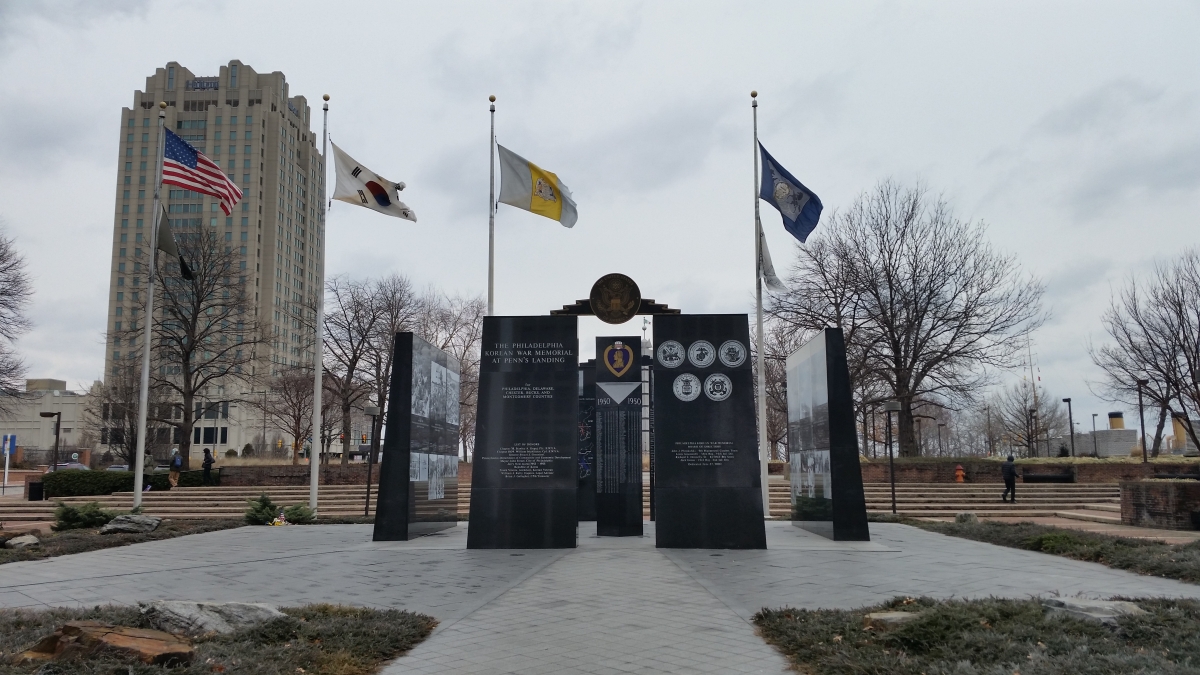
Tun Tavern Site
South Front St
Philadelphia, Pa 19106
The historic Tun Tavern was built in 1686 at the intersection of Water Street and Tun Alley. Tun Tavern quickly became a pillar in the community. It was at Tun Tavern that the St. George’s and St. Andrew’s Societies were founded which helped English and Scottish immigrants respectively. It was also at Tun’s Tavern that the first Masonic Temple was founded in 1732. A young Colonel Benjamin Franklin organized the Pennsylvania Militia in Tun’s Tavern and years later Franklin was said to have met there with other members of the Continental Congress.
But Tun Taverns is most remembered for the role it played in the founding of the Continental Marines, the precursors to the
United States Marines Corps. On November 10, 1775 the Second Continental Congress commissioned Samuel Nicholas to raise two battalions of Marines at Independence Hall in Philadelphia. As legend has it, Samuel Nicholas named the manager of Tun Tavern, Robert Mullan, his primary marine recruiter. Nicholas was quickly able to raise the forces he required, apparently with the help of a promise of some free beer from Tun Tavern. Today Tun Tavern is regarded as the birthplace of the United States Marine Corps and although the building no longer stands today, a historical marker indicates this site of extreme historic significance.
Additional Information
While our Military History Tour is one of our most popular custom tours, we can customize tours with almost any concentration. African American History, Architecture, Medical History and the 1793 Yellow Fever Epidemic are just a few of the other popular custom tours we offer. If you are interested in taking a custom tour of Philadelphia just contact us using the information below or
click here to submit a request.
The Constitutional Walking Tour
P.O. Box 2066
Philadelphia, PA 19103
215.525.1776
